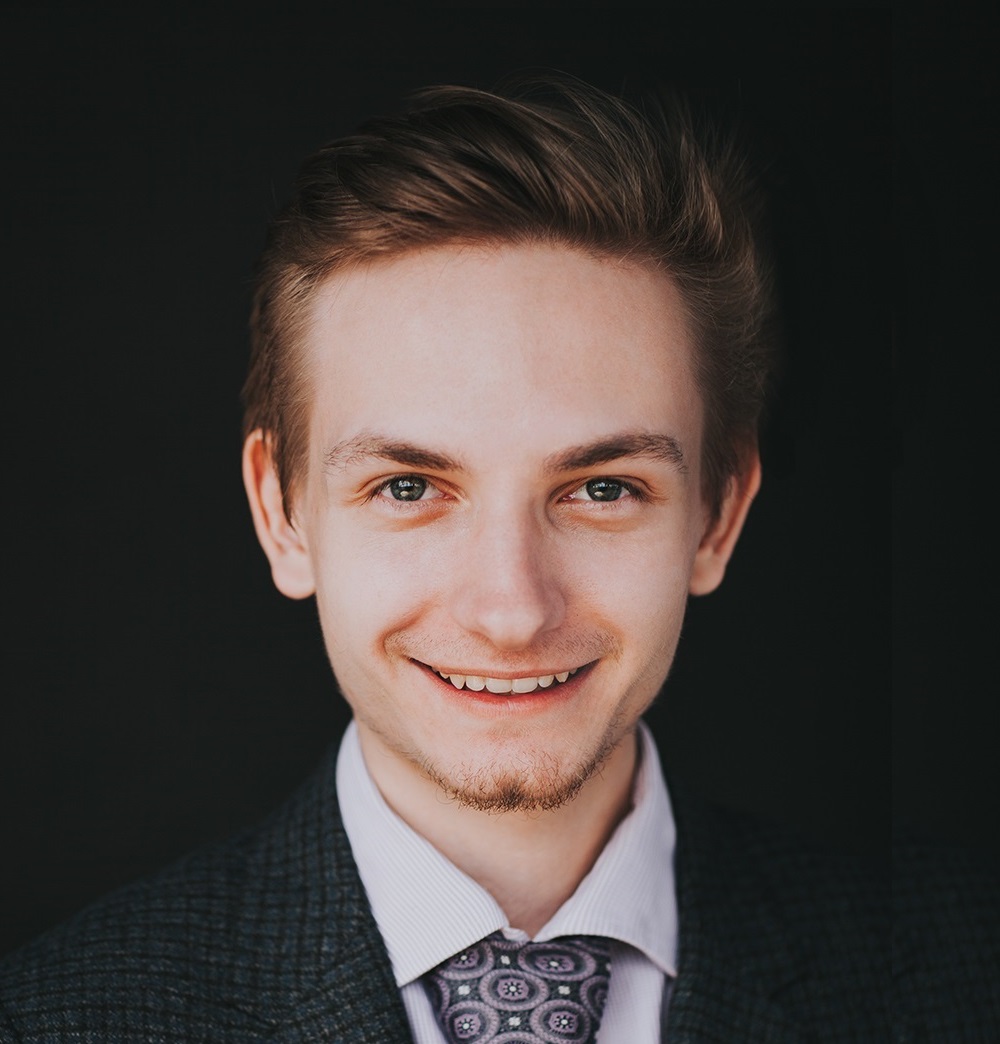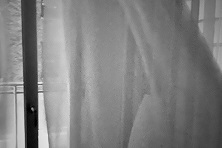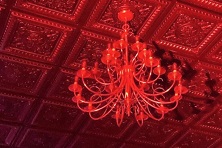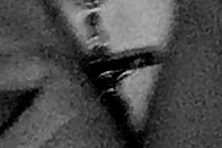Both our beginnings and our ends are shrouded in mystery, the middle parts being the only fragments that are at all comprehensible. We are not capable of understanding from whence our opportunities come and we are equally unable to determine whether an open window is an omen of doom or whether it is a blessed opportunity that had just come into being. It is only once we step through the gate of perception that we can hope to interpret the true nature of the essence with which we had come into contact. Windows, both physically manifested and as metaphysical concepts, are pathways to The Other, while the nature of said Other may be malignant or benevolent. Prior to the transformation from potential to the real, both forces are held in balance and are equally likely and equally impossible to ascertain prior to the event of manifestation. It is through openings: windows and mirrors, that we experience both the outside world and ourselves.
TRIPTYCH
We live between concrete walls, with only our windows giving us the opportunity to gaze without and with only our mirrors to gaze within. Those feeling claustrophobic or trapped tend to pay heightened attention to windows, gazing out at the world outside of them, fearing in secret that it is passing them by. Those preoccupied with self-reflection conversely gaze at themselves, or at reflections of their own past that they regard by light of candle.
As we open our windows, we let the Outside in, and by closing them we become the Outsider ourselves. The act of opening, by its nature, invites insight through the existence of the Other. If we permit it, it occupies space, assumes form, comes into being. The Presence is shaped equally by its own volition and by our perception of it, taking shape through the half-remembered forms that it recalls. An obscured object, a shapeless form from behind which something lurks can recall concepts within us – of the martyr suffering at the altar. The intertwined patterns of light and darkness juxtapose innocence and virginity with the violation of law and man alike. An obscured, hollow form – an empty husk. The tortured and suffering can nevertheless maintain a certain proud detachment from their present circumstance, their expression and being obscured by the very instrument with which their suffering is inflicted. Simultaneously, said distance allows the afflicter to maintain their own dignity by empowering them to forget the humanity of the Other.
All the while, the wind blows gently, without resistance, and without heed, and it transports us to places remote, the desolate wastelands of the Arctic tundra, of uninhabited atolls, and of the black desert storms of Abu Ghraib. It places us nowhere and everywhere at once. To find what we seek, we must leave the child within and without and follow the adult.
From one perspective, we seek what we shall find, but truthfully it is predominantly the case that what we eventually find had sought us. We invariably find ourselves in precisely the places that we were fated to be. Despite our resistance and avowed insistence on the contrary, it is more the case that we were billowed to the places where we end up rather than the comforting but illusory belief that we have selected our destination.
Eventually we tire of the wind and of the Presence, and as we close our windows, some with resignation and others in excited glee, we isolate ourselves, become effective hermits for the moment and hold ourselves in stasis. Without the outside to affect them, one either enters stagnation or proceeds to develop themselves from within. Importantly, one is flawed if they develop solely under the influence of others but also if they develop solely in isolation. The former is shallow, shapeless, and without substance. The latter is neurotic, preoccupied, and disconnected from the world and others.
The first picture is juxtaposed against the second – the purity and the plain and simple truthfulness of light and darkness contrasted with the appealing beauty of the dark temptation of false light. It is a parallelism of the battle between the virginal and the satanic, for Satan emulates the light and disguises himself as an angelic being composed of it but to the discerning, careful viewer it is a self-evident deception, an empty and utter falsehood, a gaping maw of the toothless shark.
The heart of darkness demands attention, demands to be gazed up at like an object of reverence, it desires, nay, needs adoration. It is hollow just as the shapeless form, but it is empty in a divergent sense. In place of the emptiness that can be filled by our memories, it is a void into which nothing can dare to go. It is a candleless chandelier that emanates no light of its own but is dependent on external light to be lit. It does not lack in power, but it attains its power through without, through the attraction of moths to its false flame. The demonic force weeps false wax downwards, sorrowful for itself and sorrowful for us, the observers, for it is painfully aware of its own hollowness. Vrubel’s Demon weeps for itself and for humanity – despairing in the destruction that has become attributed to Him. Similarly, the dark object, despite needing the external for its survival, also despises and loathes all that is outside of it for reminding it of its own emptiness. It draws us in and attracts us but grants us nothing in return. It is the destroying angel. It appears on a background of patterned hardness, of stubborn and unyielding repetition that gathers in the abyss of darkness, transitioning into its genuine self only at the edge of our perception.
The contrast of false light is true light. The Form of the Truth is distorted by our perception, manifest in many ways – all distortions of the original self. And yet, despite the fallen nature of this reality, the light remains true even when it has been warped. The hysterical angle depicts our confusion, the difficulty with which we distinguish between the distorted truth and the adorned falsehoods. Truth, even when overshadowed with half-truths still shines through with its internal light. The Truth emanates from on high – from the zenith, the source of genuine reality.
The light that shines down from what they layman terms the heavens, interpreted by the everyman as God, and represented by him as His cross, is unadorned in relative comparison with the false light and therefore is neglectable due to its failure to seek and demand our attention. Far too often, our attention is captured by the insignificant, the distractors, and through this, is torn away from the significant, the genuine, the important. That which carries meaning is necessarily incipient and it is challenging for even the superior person to locate it, let alone for them to direct, dedicate, and to devote their attention to it. In the same manner that the most significant latent truths that we derive from our ancestral selves are hidden deep in our consciousness and manifest themselves only in dreams that dissipate in our memories as soon as we wake, the purest and most significant truths hide in the shadows, lurk somewhere just outside of our angle of vision, remain perpetually in the corners of our eyes.
Despite this, the eternal truths manifest themselves constantly and consistently in symbology that becomes ubiquitous once we train ourselves to become aware of it. Rather in the same way as the particles that move across our vision become impossible to ignore once we focus on them, the omnipresent manifestations of our core symbols that are derived from our collective subconscious become suddenly and overwhelmingly evident following our initial moment of noticing.
Thusly, the Truth is held within a variety of containants, tragically consistently perverted due to the very nature of our perceptual capabilities. Through the act of looking, we alter the object upon which we gaze; through the act of remembering, we alter the past. Hence, the cross is a symbol of tradition, of eternal truth, but is nevertheless changed by its very form and the associations that we hold in relation to it.
The distortion of our memories and of our perceptions of the truth is represented in the final image with grit and blur – the effects representing the fading and unreliability of our memories. It is a false belief that our memories are representations of the past as they are rather reconstructions, reimaginings of once experienced events which may bear some passing resemblance to what had once occurred, but are nevertheless in no way faithful depictions of the events that had once taken place.
The final picture also recalls the first image, united by the idea of torture within and/or without. While the cross itself is a symbol of suffering, of latent fears and anxieties manifest, it is likewise notable that it is hung or, perhaps more accurately, hanged. In its portrayed form, it recalls loneliness, ugliness, and the macabre. Simultaneously, the position of the cross itself is significant, contrasted as it were with the anti-virginal, of the inversion of the first image. Rather than a form suggested by emptiness as in the first picture, the final image instead contains an emptiness suggested by the form. While the presence in the first image occupies a blank canvas and therefore transforms isolation into a mimicry of companionship, the final converts a mimicry of companionship into isolation – from a memory of unity into a reminder of inevitable and unavoidable eventual individuation.
The cross in the foreground also stands in contrast with the anti-virginal represented by the obscured image of a woman. In effect, this dichotomy represents the Madonna-whore complex, our repeated failure to desire that which we perceive as committed and faithful and our constant pursuit of that which is Other, alternatively, the unknown, the undiscovered, the remote, the desolate, and the cold. It is our undefeatable nature to continually overvalue the unattained and to undervalue what we possess and therefore we are damned to our individual self-imposed Sisyphean tortures. That which we possess invariably dissipates into sand and that which we chase after is ultimately revealed as a mirage. The central truth of the nature of our desire is that it is not that the objects that we yearn for are flawed-in-themselves, but rather that we destroy them through the very act of attaining them. The beautiful and pure can only remain that way if we do not come into contact with it, and our contact is unavoidably compromising and corrupting. Therefore, we despise that which we possess and simultaneously come to detest in juvenile frustration that which we cannot attain.
In the corruption that we cause by our contact, however, we are not evil because our intent is not malicious, but neither are we merely misunderstood for we are aware, even if only subconsciously, of that what we do. We are incapable being of the heirs to the glimmering world as by assuming our place we transmutate the glimmer into plainness, but we are also not unrightful heirs. We are entitled to and have earned what we receive, but through the very act of taking, we, cruelly, destroy our own prize, like a petulant child.
In sum, the four images in combination represent a cross themselves composed of two rows intertwined with the binds of purity, falsehood, truth, and our representations thereof. We are preordained to come into being, to attempt to earn our place through gainful existence and maximal effort and aspiration, to inevitably decline despite our clawing rage against this inescapable reality, and to be reborn once more… only to repeat the same eternal cycle.




